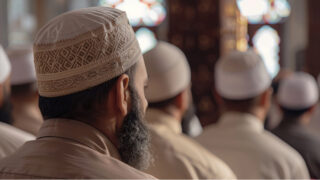Societal norms of sexual relationships and family life are in a state of continual change. Living in the 21st century, we find that these changes that used to be slow and gradual in the past are gaining more and more speed. We have already been into Future Shock and the Third Wave of dramatic and catastrophic changes in the way of thinking, in our attitudes and approaches to life and the world. (Alvin Toffler’s Future Shock [1970] and The Third Wave [1989] are path-breaking books that describe the effect of fast changes that overtake modern societies.)
In most of the so-called civilized countries, family values seem to have lost all worth for most people. In the post–World War II generation of the United States, 80 percent of children grew up in a family with both the parents. Now that number has dipped to 60 percent or more. Before declining slightly in recent years, divorce rates had soared more than 30 percent since 1970. Today nearly half of American marriages are projected to end in divorce or permanent separation. Nearly half of people between ages 25 and 40 at some point have lived with a member of the opposite sex outside of marriage.
Please notice that we take the American statistics for the following reasons: (1) Reliable statistics are available there; (2) Most countries and people of the world imitate the Americans and are facing the same results; (3) Most of the critics of Islam come from America and so they are expected to have first-hand experience of the situations described.
Ninety percent of women born between 1933 and 1942 were virgins when they married; now over half of all teenage girls in the United States have sexual intercourse with some man before age 17. More dramatically, the percentage of teen girls who said that having a child out of wedlock is a “worthwhile lifestyle” rose from 33 to 53 in the past two decades. And what about same-sex marriage? It is being accepted even by the conservatives and the clergymen as perfectly normal. Such findings lead many people to conclude that “the institution of marriage is in serious trouble.” (Michael A. Fletcher, “Study: Marriage Rate Is at Its Lowest Ever—Findings Are Proof of Changing Attitudes, Report’s Authors Say,” Washington Post; published Friday, July 2, 1999, in The San Jose Mercury News.)
To speak of the age of consent for women in the United States: A 20-year-old woman who marries in Nebraska breaks the law because there the age of consent is 21, while a woman in Alabama can legally marry at that age, as the age of consent there is only 18. A hundred years ago, under the common law in the United States, the age of consent was just 10 years. Ancient Jewish law permitted girls to be wives at a much younger age. In ancient India girls as young as five and six were married to much older men. Even now the practice continues among some Hindus.
The foregoing shows that the minimum age for girls to be married varies from culture to culture and from age to age. Against this background, there seems to be no point in holding a particular age as the right age of consent in the post-modern world. But people who want to impose one on a different culture or religion would make it a big issue. It is surprising how even the intellectuals show a tendency to judge others by their own culture-specific standards as though these should be accepted universally binding on the whole of mankind!
This is not to argue that today’s girls should be married off at nine or ten years, for no one can ignore that the times, the social conditions, and the cultural milieu have undergone immense changes. But the very same fact should help us to realize that in another age and in another cultural setting, marrying a girl at the age of nine was quite the norm and there could be nothing surprising about that.
The events of the Prophet’s life (as also is the case of the lives of other prophets of the past) should be interpreted in the light of the socio-historical conditions of the times. What people often miss is the absurdity of trying to assess an event of sixth century Arabia, as though it happened the other day in downtown Manhattan or Birmingham.
It is worth stating here that it was Abu Bakr, the father of `A’ishah, who gave her in marriage to Muhammad (peace be upon him), and that she remained a faithful and loving wife until death parted her from her husband. And of the wives of the Prophet, none was so mature and knowledgeable as `A’ishah (may Allah be pleased with her).
It is only natural that some of the things that the Prophet did or said may not correspond to a particular time or situation; but that does not make such examples insignificant or irrelevant. In the future, situations and conditions may arise that call for decisions or rulings based on those examples.
*by Shahul Hameed

















